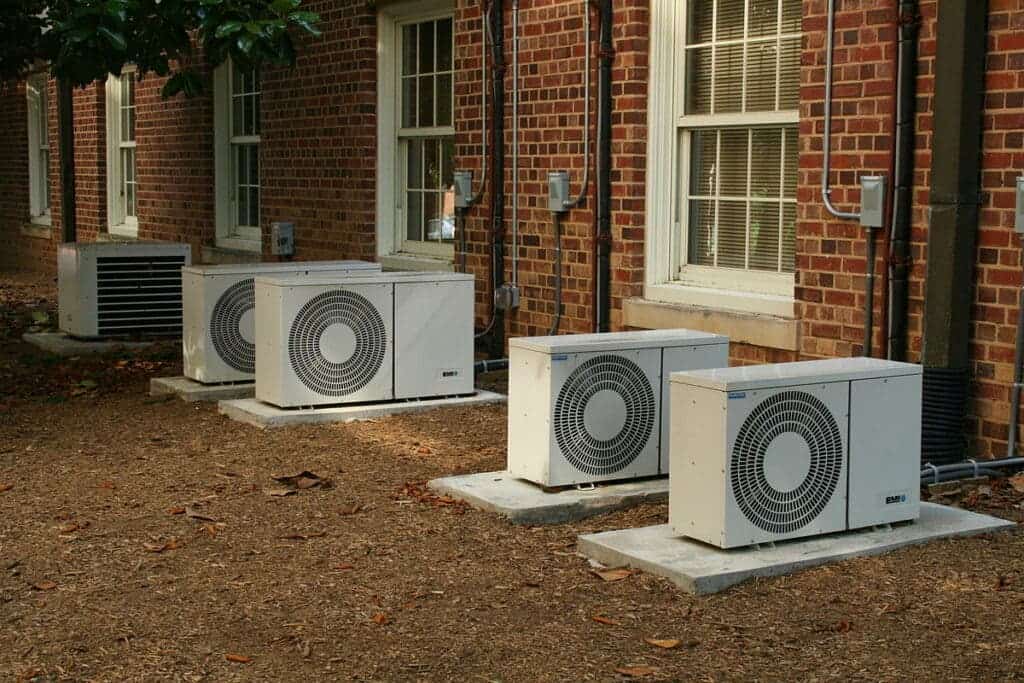Up 460 billion tons of greenhouse gas emissions (or about eight years’ worth at the current rate) could be avoided over the next four decades if we paid more attention to our air conditioning. Establishing tougher standards on air conditioning and cooling appliances could make a world of a difference a new report claims, with researchers calling for ways to improve the energy efficiency of the cooling industry.

The Cooling Emissions and Policy Synthesis Report from the United Nations Environment Programme (UNEP) and the International Energy Agency (IEA) has a clear message: they want to make air conditioning more efficient. In the report, the authors argue that by improving the efficiency of refrigerants, we could “freeze” global warming in place for time, offsetting emissions equivalent to 4-8 years of the planet’s emissions.
“By improving cooling efficiency, governments can reduce the need for new power plants, cut emissions and save consumers money. This new report gives policymakers valuable insights to help them address the global cooling challenge,” said in a press release Dr. Fatih Birol, IEA Executive Director.”
Worldwide, an estimated 3.6 billion cooling appliances are already in use. That figure is expected to skyrocket by 400% by 2050 as the planet becomes hotter and the world becomes more affluent. Cheap devices require a lot of electricity and if that electricity comes from coal or gas-fired power plants, we’re just creating a feedback loop that leads to more global warming, and the cycle repeats.
But it’s not a single issue when it comes to the greenhouse gases produced by cooling systems. Many such devices still use hydrofluorocarbons (or HFCs) — a group of potent but short-lived greenhouse gas. Eliminating them is one of the most straightforward ways to tackle climate change, potentially avoiding as much as 0.4 degrees Celsius of warming by the end of the century.
In 2016, countries agreed to a binding treaty known as the Kigali Amendment to eliminate HFCs. However, major polluters such as the US, China, and India haven’t ratified it yet. Even some countries and regions that accepted the treaty are having major difficulties in tackling illegal refrigerants smuggling. Europe’s flourishing illegal HCF trade of hydrofluorocarbons highlights just how challenging this issue is.
“As nations invest in COVID-19 recovery, they have an opportunity to use their resources wisely to reduce climate change, protect nature and reduce risks of further pandemics. Efficient, climate-friendly cooling can help to achieve all of these goals,” said Inger Andersen, UNEP Executive Director, in a press release.
The report estimates that doubling the energy efficiency of air conditioning by 2050 would reduce the need for 1,300 gigawatts of additional electricity generation capacity to meet peak demand — the equivalent of all the coal-fired power generation capacity in China and India in 2018.
This would also save a lot of money, the report notes. Making air conditioning two times more effective could save the world up to $2.9 trillion by 2050 in reduced electricity generation, transmission and distribution costs alone. Doing so would bring many other benefits, such as increased access to life-saving cooling, improved air quality and reduced food loss and waste, the report says.
But it won’t be easy.
To achieve such goals, the EIA and UNEP recommend a set of policy actions such as implementing energy efficiency labels on cooling equipment, updating building requirements and expanding sustainable cold chains. This involves the transportation of temperature-sensitive products along a supply chain in a way that could prevent food loss and emissions. At the same time, demand for cooling is rising, and supply chains are under immense stress from the coronavirus. It’s a great challenge, but the results will be worth it.






